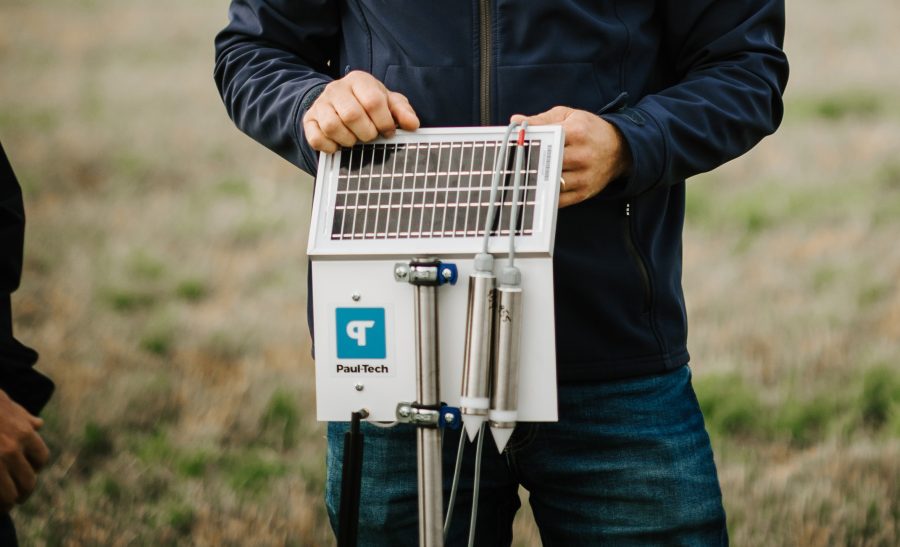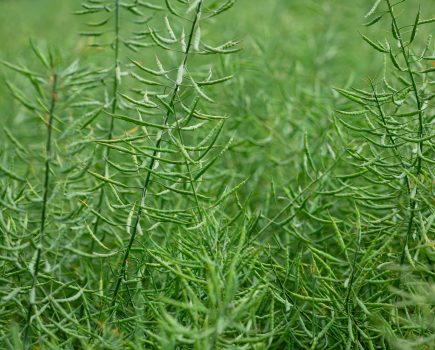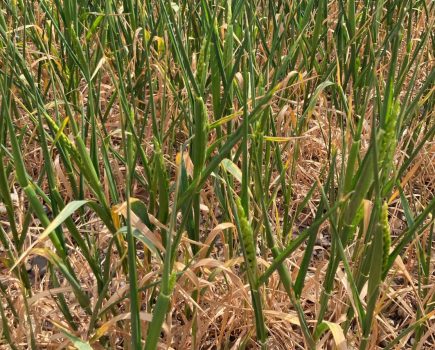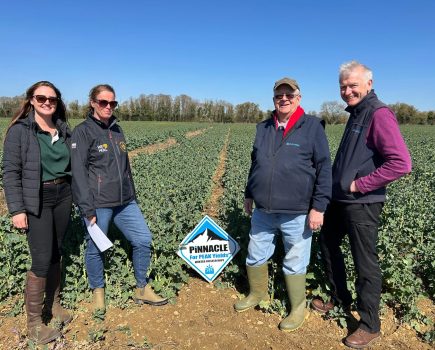A leading salad grower is transforming their operation with a new “game-changing” solution that allows them to understand exactly what is going on beneath the soil and cut fertiliser inputs by up to 70% while improving yields.
Peter Nowak, from TLC Sussex – G’s Growers, has partnered with Paul-Tech to trial a new soil station system and says the data and insights it provides will create significant savings on fertiliser and deliver more resilient crops.
The next generation Paul-Tech system combines real-time proprietary sensor data (buried at two levels in the soil) with weather and satellite data and translate this into simple actionable insights.
The system delivers real-time nutrient levels, nutrient availability, soil water availability in combination with agronomical know-how and gives automated recommendations for growers in a simple web solution that allows them to make accurate decisions on crop inputs and irrigation, ensuring crops can perform to their full potential.
The Paul-Tech solution iwas officially launched in the UK at LAMMA.
Peter said: “We make our living from the soil and this technology provides confidence in what you are doing in reference to crop nutrition and irrigation. We’ve found you can improve your crops quite a lot by using this system.
“You can get different probes to provide a lot of this information, but none do it all in one like the Paul-Tech system and this gives you so much more.
“The soil testing element is a game changer as it gives you the confidence you need to adjust your fertiliser regime – you can’t do that with standard soil moisture sensors alone.”
In trials across Finland and Estonia, the Paul-Tech sensors have delivered significant savings for growers by enabling them to cut crop inputs.
One grower in Finland was able to cut nitrogen use by 70% in his onion crop while improving yields by 5%.
Aleksi Uussaari, of AFC Uussaari, normally adds 80kg/N/Ha at the start of the season and then adds nutrients as necessary, normally adding to a total of 140kg/N/Ha. With the Paul-Tech sensor, Aleksi discovered every time moisture rose in the soil due to irrigation or rainfall, new nutrients dissolved and were made available to the plant.
This meant there were still unused nutrients available for the plant to use. Though there was a decline in nutrient numbers each time, the sensor showed there was still a sufficient amount and no further inputs were needed. By the end of the season the nutrient numbers were similar to spring levels, meaning all the additional nutrients had been used by the plant.
The Paul-Tech soil stations are now being introduced at growing operations across the UK and, for Peter, he is also seeing clear benefits in terms of fertiliser savings and crop quality.
He added: “When applying fertiliser there is always a worry you might not be providing enough and starving the plant or, worse still, you may be providing too much and damaging the plant. The Paul-tech solution takes that worry away and stops any fertiliser going to waste.”
“The probe helps us to assess what is happening in the soil at any moment and ensures we can make informed decisions about irrigation and nutrition. Better still, the sensors will give you an advance warning about water stress or nutrition challenge so there is time to react before the plant suffers.
“It’s so important to know what is happening in the soil but all too often, for growers it can be a bit of a finger in the air when you’re making fertiliser decisions. With this, you put the probe down and it takes all of the guesswork away.
“This is all about giving the grower confidence and, ultimately, you get a great crop.”
Paul-Tech is based on 30 years of soil research and now works with more than 120 growers across Europe and the UK.
Chief Executive Mikk Plakk said: “This soil station is the culmination of decades of research on creating the perfect soil environment to maximise crop yields. It’s a simple but highly effective solution that delivers unparalleled insights to growers
“The real-time updates and simple dashboard ensure growers know exactly what is going on in the soil at any time and this gives them the information they need to make decisions that save money and deliver maximum profit from their crops.
“The Paul-Tech station is transforming what we know about our soils and nutrient availability to the plant. With so much pressure on growers, simple solutions like these that provide valuable data will be key to ensuring they can continue to grow and prosper.”
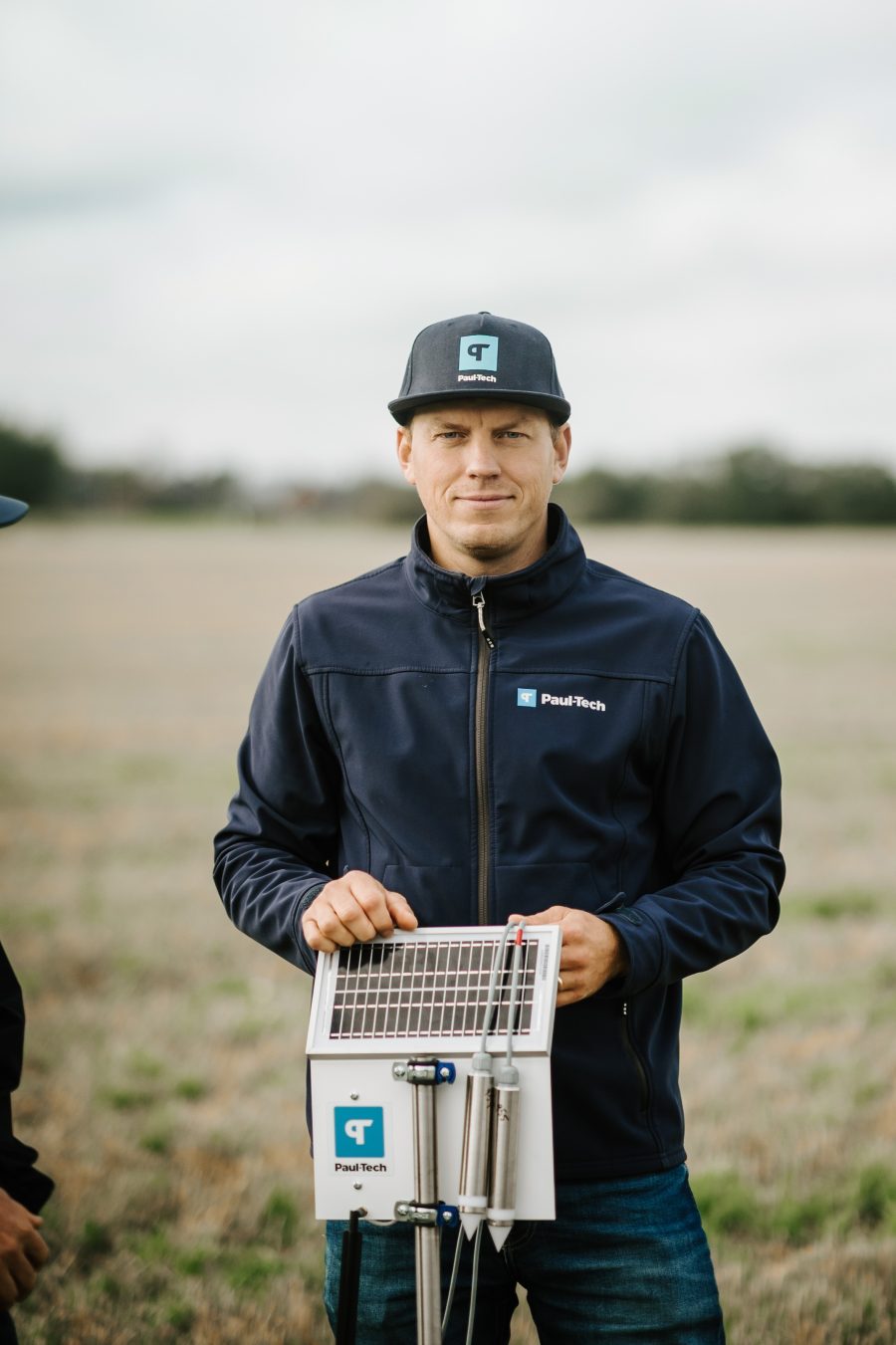
Mikk Plakk of Paul-Tech

